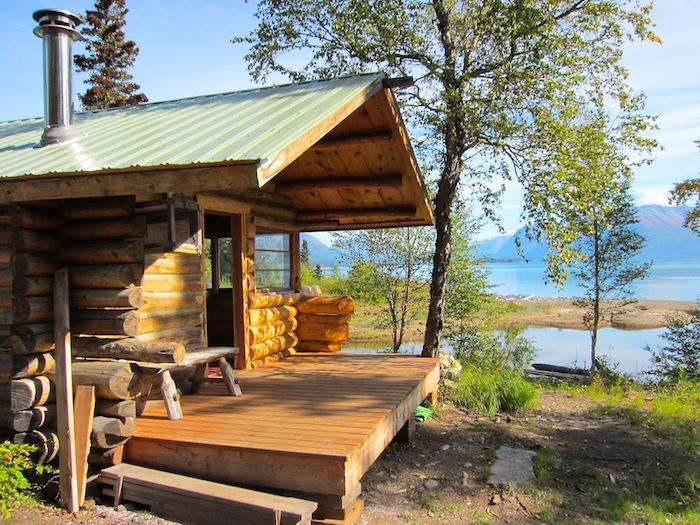
When you really want to get it away from it all, consider Lake Clark National Park and Preserve in Alaska. And now you can even have a place to stay!
Lake Clark National Park will open its first public-use cabin on July 1 in the historic Woodward cabin at Priest Rock on the north shore of Lake Clark, which is about nine miles from Port Alsworth. The cabin is accessible via boat or aircraft from Port Alsworth and will offer a base for kayakers, hikers, and anglers to experience Lake Clark and the surrounding wilderness.
The cabin, which costs $65 per night, accommodates up to six people and is equipped with a wood stove, table and chairs, and a nearby outhouse. Sleeping accommodations include wooden bunks - three single beds and one queen bed. Of course, being "rustic," there is no electricity or running water at the cabin. Fresh water is available in the lake, but must be treated. There also is no cell phone coverage at the cabin, so know immediate Instagrams from the lake. There also are no mooring buoys at this location.
Reservations can be made through www.recreation.gov. Trip planning information for Lake Clark National Park is available at the park's website.
The cabin was originally built and lived in by longtime Alaskan Allen Woodward, who was a summer resident of Lake Clark from about 1950 to the early 2000s. Woodward built the cabin in the mid-1970s after his original cabin suffered severe damage during flooding in 1971.
Woodward was a veteran naval aviator from the Pacific Theater during World War II. After the war, as a civilian, Woodward continued his love of aviation with a career with the Civil Aeronautics Administration, the predecessor to the Federal Aviation Administration. He worked in the first flight control tower in King Salmon, then in the control tower in Anchorage in the 1950s before switching to being an FAA pilot flying all over Alaska.
Woodward was part of a generation of Alaskans who built and lived in remote log cabins as aviation was making remote living more accessible throughout the state. Some of Lake Clark National Park’s most famous residents, Dick Proenneke, of One Man’s Wilderness fame at Upper Twin Lake, and Jay and Bella Hammond, former Alaska governor and first lady on Lake Clark, built cabins during the same period.
Proenneke, Hammond, and Woodward represent the post-World War II veterans who were pilots and early settlers in the Lake Clark country. Aviation allowed them to see Lake Clark for the first time, and afterwards enabled them to own property there and to access their cabins.
Aviation was a transformative agent throughout Alaska beginning in the 1920s, and then opening up the territory after World War II. Hammond, Woodward, and Proenneke were in the vanguard of the post-WWII settlement of Lake Clark.
In 1979, Woodward sold the first of his three cabins on Lake Clark to the National Park Foundation to become the office for the new Lake Clark National Monument, even before it was designated as a national park in 1980. This cabin is now on the National Register of Historic Places.
Beginning in 1986, Marian Woodward joined her husband for summers on Lake Clark in the cabin at Priest Rock on Lake Clark, hosting visitors, gardening, and enjoying life on the lake until the early 2000s.
In 2000, Allen and Marian Woodward donated a rare and largely intact Bristol Bay double-ender wooden sailboat that was in use in the commercial salmon fishery, circa 1916 to 1950. The double-ender is now restored and on display at the park’s visitor center in Port Alsworth.
The Woodward cabin at Priest Rock offers park visitors the opportunity to stay in one of Lake Clark’s iconic and historic log cabins. Visitors will be able to experience the same sights and sounds that the Woodward family enjoyed for many years on Lake Clark.





